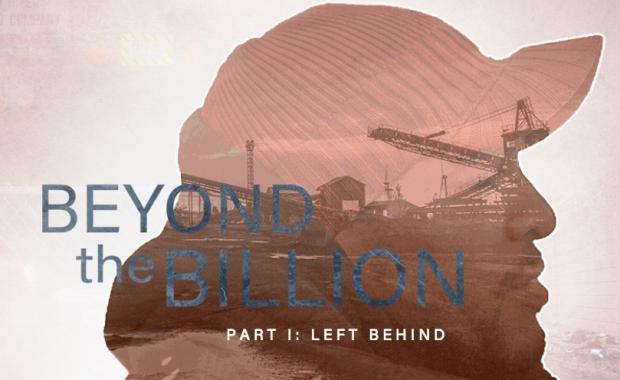Beyond the Billion, Part I
The following is part I of a series focusing on the underside of the “Buffalo Billion” that appears courtesy of a content-sharing agreement with City & State.
Story by Justin Sondel, photos by Brendan Bannon.
Every weekday evening for the last few months, Tuan Jones has roused himself to take the drive to his graveyard shift job helping packages from Canada reach their intended destinations in the United States.
Jones, who is short and trim, with soft eyes that are almond in color and shape, returned to his hometown of Buffalo about two years ago after spending nearly a decade and a half in the Navy as an air conditioning and refrigeration specialist, living in Jacksonville, Florida, for the majority of his time away.
While in Florida, the self-proclaimed “hometown boy” would often read about the Queen City and feel the pangs of homesickness.
“It sucked,” he said.
For years he saw the headlines that made Buffalo into a punchline for the rest of the country. The Bills. The Sabres. The weather. The job losses. Even in Florida, Jones felt the cruelty of the nation’s condescension.
But Buffalo’s story has started to change. Instead of news about factory closures, Jones was reading stories about job gains, low unemployment and a construction boom in the years leading up to his return.
The first signs of a resurgence started percolating in the early 2000s with the advent of the Buffalo Niagara Medical Campus, an umbrella organization of health care providers, institutions of higher learning and neighborhood associations that manages more than 6 million square feet of clinical and research space, spread out over 120 acres just east of downtown.
Since then, dozens of projects throughout the region have been completed or are taking shape. Construction is going at such a fast clip that union leaders have said they won’t be able to fill all the jobs.
As Buffalo’s fortunes fluctuated, Jones’ desire to come home never wavered.
“For me to be all the way down there and to have my family all the way up here, I didn’t feel nothing, anything,” Jones said. “I had to have a lot of friends in Florida just to fill the void of family up here.”
However, since returning, Jones, now 42, has struggled. Last May, after being out of a job for more than six months, he entered a training program at Buffalo State College in advanced manufacturing, a year-long commitment that will qualify him for entry-level positions at Buffalo’s manufacturing outfits, where employers have been searching fervently for talent in recent years.
His goal is to find a job that will offer the sort of stability he needs to stay in Buffalo, with his family.
“I’m glad I did come home,” Jones said. “It’s just the fact that opportunities, they are slower than what they should be.”
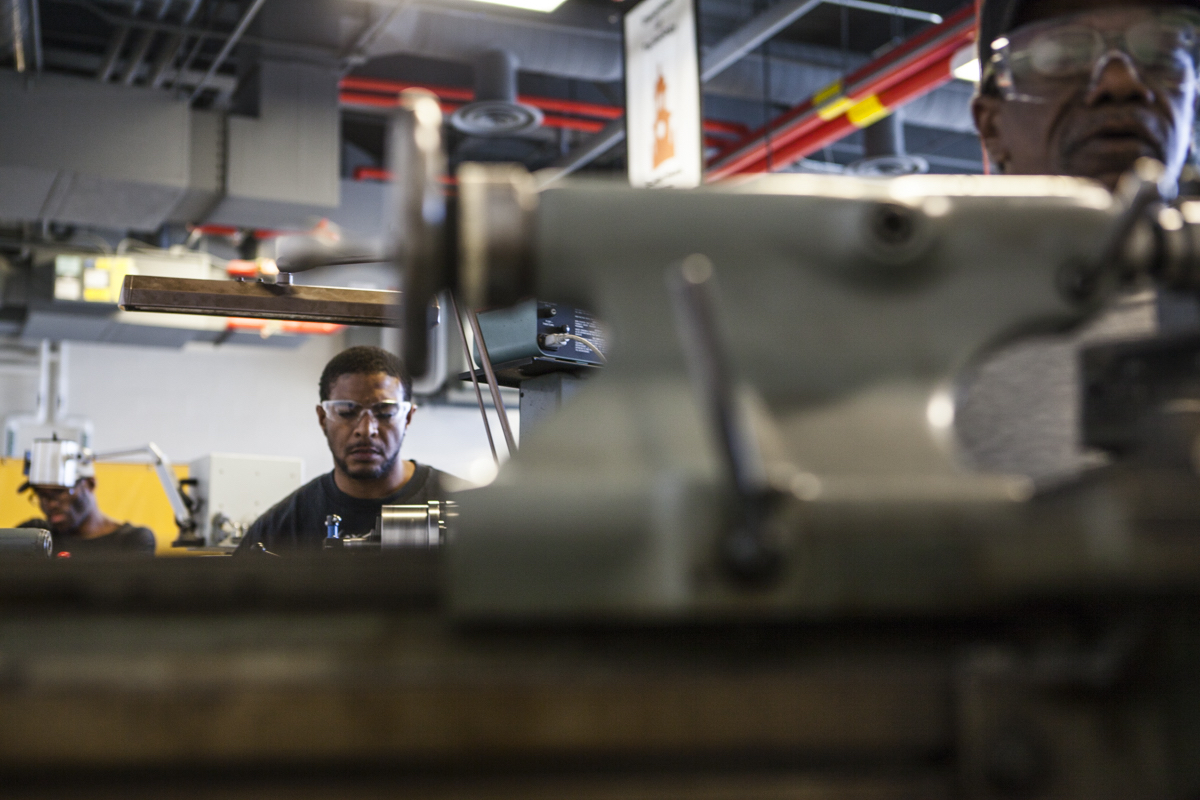
Tuan Jones (center) is enrolled in a yearlong advanced manufacturing training program aimed at helping minorities, women and veterans who have been out of work for at least 20 weeks. After serving in the military, Jones returned to Buffalo to find jobs scarce despite the state’s recent investment in the city.
THE FALL
Buffalo’s decades-long decline is the stuff of civic horror stories, but it certainly is not unique. Cleveland, Detroit, Milwaukee – all industrial powerhouses of the Rust Belt – also felt the impact of an economic freefall beginning in the 1960s. Their declines were of the same magnitude, or worse.
Factory jobs, the bread and butter of the Rust Belt, were driven south and out of the country. For decades, Western New York hemorrhaged jobs during recessions and then slowly gained some of them back. Company after company announced it was shuttering its Queen City operations, either closing shop completely or heading for greener pastures with warmer temperatures and fewer labor laws.
From 1990 to 2010, employment in Western New York was essentially flat. Over the same period, the number of jobs across the nation grew 31 percent.
While young people moved away seeking other opportunities, no one was coming to Western New York to replace them. There were more than 530,000 people living in Buffalo at the 1960 census. Today the number hovers around 260,000.
Compounding the problem of population loss was white flight. Even as the overall regional population fell, many suburban communities swelled as the city’s white residents – who were more likely than minorities to keep their jobs or get new ones as the bottom fell out of the economy – fled the city.
After decades of disinvestment, Buffalo – a once-bustling economic behemoth that at one point was home to the most millionaires per capita in the nation – had become a collection of hollowed out neighborhoods with pockets of intermittent stability and a few bastions of old money.
In recent decades politicians, advocates and community leaders have grappled with those economic realities. Countless officials have vowed to return Buffalo – the home of the Pan-American Exposition, the Larkin Soap Company, Bethlehem Steel, and the gateway from the Midwest to the East Coast – to its grandiose former self. But those vows repeatedly went unfulfilled. The cruel misfortunes of the city’s sports teams and routine blizzards contributed to its reputation as a national punching bag: four consecutive Super Bowl losses. Endless winters. Even worse, a new economic blow splashed across the headlines every day. In the collective American psyche, Buffalo had become one of the last places you’d want to be.
LEAVING HOME
After graduating from Seneca Vocational High School in 1993, Tuan Jones drifted between jobs while taking classes at Erie Community College.
While he was able to stay out of trouble, many of his friends were falling into the typical traps of growing up black and male in an American city. When Jones graduated, Buffalo, like many cities across the nation, was still in the midst of a spike in violence. He has many fond memories of his childhood home, less than a block east of Main Street. Still, during his teens it was dangerous enough that his mother wouldn’t let him play outside after dark.
While Jones walked his own straight and narrow path, some of his friends were killed, and many more went to prison.
“The same friends that, they did all this negativity stuff, they were going down the wrong path, I went down the right path,” Jones said. “I went to the Navy and most of them are still locked up some place or doing crime or trying to make ends meet just by selling something or whatever. I can’t live like that.”
There were few options for Jones in the 90s. The factory jobs that had once supplied many of his family members and neighbors with stable incomes were scarce. As time went on, he felt like he was running up against a wall.
“There was a lot of low, low paying jobs,” Jones said. “And you had to know somebody to know somebody to get in at either American Axle, or General Motors or Chevy.”
His dad, a Navy man, felt he had the solution.
“My father pretty much tapped me on the head and said, ‘You know going to school is not going to get you nothing in Buffalo. Trying to get you a job is not going to get you nothing in Buffalo. Take your butt to the service. Get something that you can benefit from out of the service and that you can use later on in your life.’ ” – Tuan Jones
So Jones did just that. His experiences in the military were almost identical to his dad’s. Both men were air conditioning and refrigeration specialists. They were assigned to the same ship, the U.S.S. Kennedy, before the vessel was decommissioned.
And just like his father did years ago, after leaving the military Jones returned to Buffalo.
“I was always following in his footsteps,” Jones said.
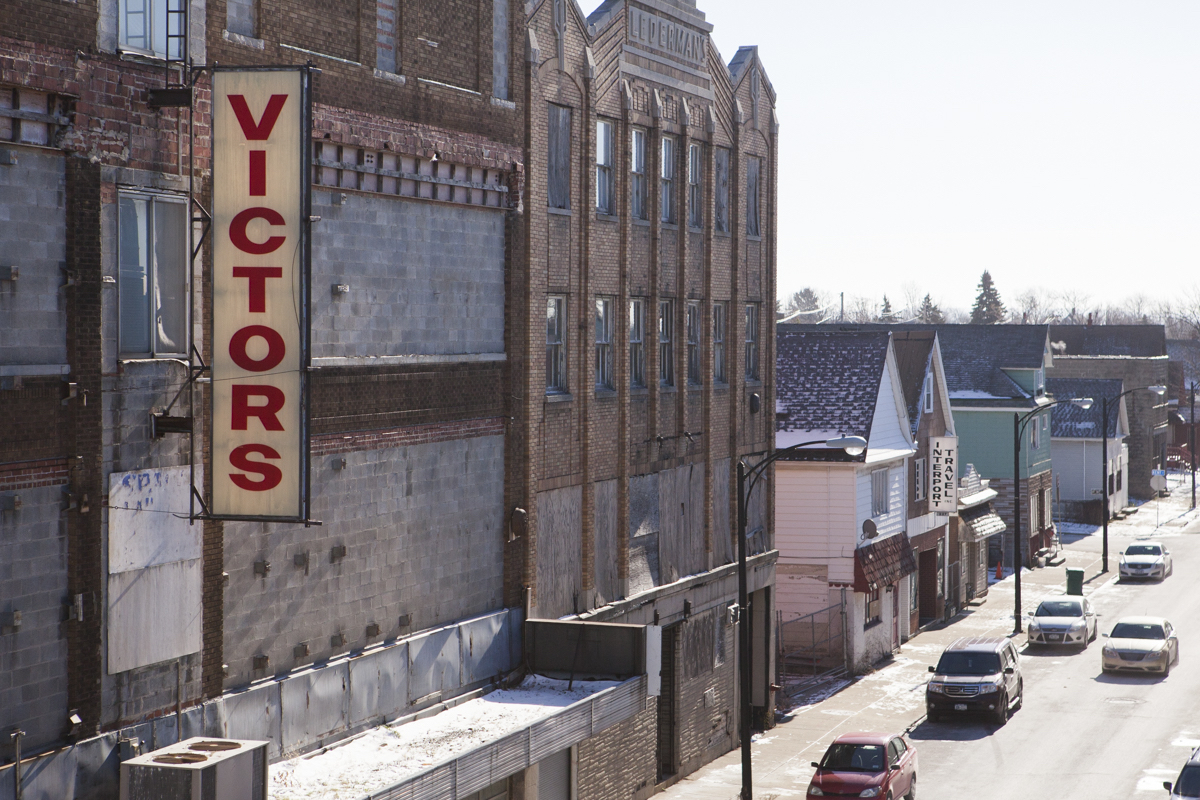
THE PROMISE
In his 2012 State of the State address, Gov. Andrew Cuomo, with all of New York’s political, business and advocacy leaders watching, made an announcement that would rock Western New York and dominate headlines for years.
Revealing the details to almost no one outside of his inner circle before the speech, Cuomo unveiled his Buffalo Billion initiative, prefacing his commitment of $1 billion for economic development to Western New York with the story of Buffalo’s downfall.
For too long, he said, Buffalo had been forgotten by the rest of the state, and its nearly 30 percent poverty rate, at the time the third-highest in the nation among cities of over 250,000 people, was something state leaders could no longer ignore.
“We believe in Buffalo,” Cuomo said. “Let’s put our money where our mouth is.”
Yet another promise. A billion dollars to stem the tide of decline, a full five decades after it began.
Western New York jumped in with both feet. And in the years since, the press has celebrated it, too.
Area politicians at all levels – and from both major parties – have praised Cuomo’s commitment to the region at every opportunity.
The accolades have rolled in at the announcement of one new investment after another. One recent example came after the governor announced that the state would build a pharmaceutical manufacturing plant south of Buffalo and also expand the headquarters of the company, Athenex, on Buffalo’s medical campus.
State Sen. Catharine Young, a Republican, thanked the governor “for believing in us, for investing in us, for caring about us,” calling it a “new dawn in Dunkirk, New York, and for all of Chautauqua County.” Buffalo Mayor Byron Brown applauded Cuomo, a staunch ally, for spurring a “new level of growth and private sector confidence.” Erie County Executive Mark Poloncarz proclaimed that the announcement “once again demonstrates Gov. Cuomo’s commitment to attracting business growth and creating real opportunities for the people of Erie County.”
The announcement was one of dozens that have played out since Cuomo’s pledge to the region. Indeed, the planned projects, as well as a series of concrete and very visible changes in the region, have altered Buffalo’s image in ways that many residents could not have imagined a decade ago.
Where there was once an empty parking lot in the heart of downtown there is now Terry and Kim Pegula’s shrine to hockey, HarborCenter, a megaplex replete with ice rinks, a massive sports bar and a “signature” Tim Horton’s decked out in Sabres colors.
Across the street, where there was once a gravel parking lot and the old Buffalo Memorial Auditorium – the asbestos-ridden former home of the Sabres – there are now replica canals that serve as ice rinks in the winter and a large green space and boardwalk where free concerts are held.
To the south, the largest solar panel factory in the Western Hemisphere is nearing completion at the state’s Riverbend site, where Cuomo’s team finagled a massive $5 billion commitment from the flashy, if risky, SolarCity. The 1 million-square-foot factory, which will be owned by the state and run by the company, is taking the lion’s share of the money earmarked for the governor’s Buffalo Billion initiative, with an estimated price tag of $750 million.
Travel writers from the Washington Post, the Toronto Star and the Guardian have gushed in the recent years over the city’s architecture, restaurants, art scene and natural beauty – features that have remained a constant through the rise and fall of the lakeside burgh but were mostly unknown to people outside the region.
And, following national trends, the area’s jobs numbers have also been more rosey. The region saw jobs gains for nearly six years straight, although revised numbers showed a slight contraction in December, and there is little doubt among residents that the Cuomo administration’s concerted efforts in Western New York – the lucrative subsidy packages, business competitions and old-fashioned marketing – have at least partly driven that growth.
The state Department of Labor, whose conservative estimates are rooted in recent historical data, doesn’t see any signs of that trend slowing in the coming years. The department estimates that the region will gain more than 52,000 jobs between 2012 and 2022.
Still, the question that continues to be asked by a variety of community groups is whether all this good news will be felt in every neighborhood, as Cuomo suggested when his Buffalo Billion initiative was introduced.
PAINTING IN BROAD STROKES
While neighborhoods throughout Buffalo suffer from similar civic ills, the East Side, a massive, complex series of neighborhoods composed of everything east of Main Street – which serves as a de facto dividing line for race, wealth, and class – is often painted with a broad brush.
The East Side is more than 85 percent African American, disproportionately poor in a poor city, and often equated with criminal activity.
One East Side neighborhood, Broadway-Fillmore, which was once home to the city’s large Polish population and later became a largely African-American neighborhood, is today one of the more deserted sections of town. Hamlin Park, to the north, is a registered historic district where, while vacant houses do dot the neighborhood, middle-class African Americans have lived in a tight-knit community since the 1950s, taking pride in their turn-of-the-century homes.
Although the West Side has more wealth, it too has neighborhoods with poverty rates that exceed 50 percent. There, some young people, lured to the drug game by a lucrative job in a place where few exist, hang out on porches waiting for the next customer. Detectives in button-down shirts and loose-knotted ties sometimes gather around the body of such a young person, trying to figure out how his life ended.
More complex are the West Side neighborhoods that line the shores of Lake Erie and the Niagara River. This is where the city’s exploding refugee and immigrant populations are making their homes, bringing new traditions and opening celebrated restaurants. These are the neighborhoods where “urban pioneers” first laid claim, creating an environment where more affluent young people could feel like they were making a safe investment, eventually causing home prices to skyrocket on streets once known more for their affiliation with the 7th Street Gang and 10th Street Gang.
But the East Side, despite the many nuances between neighborhoods, is often perceived as a monolith, a place that, especially if you are white, especially if you are from more affluent sections of town or the suburbs, is to be avoided.
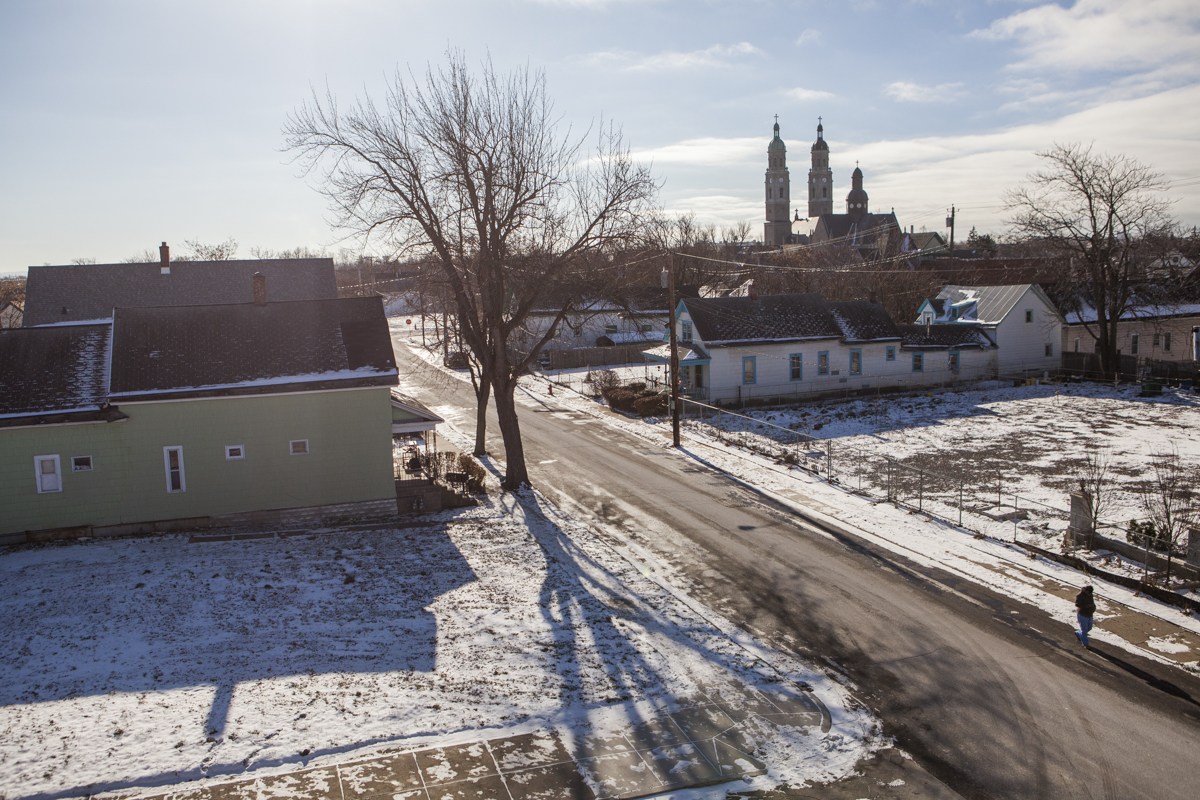
The Broadway-Filmore neighborhood was once one of Buffalo’s most bustling neighborhoods. Today it is one of the neighborhoods most affected by disinvestment, with entire blocks now devoid of residents.
BEST-LAID PLANS
Henry Taylor, a University at Buffalo urban planning professor, has spent the better part of a three decades working in and studying the city.
In his office in a squat, stone building on the university’s picturesque south campus, Taylor is surrounded by papers, a considerable amount of it plans and research. Plans to change this neighborhood or another. Research on patterns of population movement or markets.
“In this office we have dozens of plans we have developed for virtually every section of the East Side, dozens of plans,” Taylor said, his voice rising in both tone and volume.
Those proposals, sitting in piles and on shelves throughout his office, have never been taken seriously by city leaders. Sometimes they were paid lip service, but, when it came time to put the chips on the table, the money to carry them out was never dedicated, he said.
“We laid out, 25 years ago, a strategy for the rebuilding of the East Side,” Taylor said.
In that time only a few projects have moved forward and only in halfhearted attempts to create the illusion that city leaders were doing something for the community, he said.
Meanwhile, plans to carry out other transformative projects – the medical campus, Canalside, Riverbend – have gone forward successfully because the resources necessary have been provided by leaders from all levels of government.
“If the leadership made developing East Side neighborhoods the same kind of priority that they made the medical campus, the waterfront and some of the other big projects that have occurred in this region, then we would be having a very different conversation,” Taylor said.
Even the medical campus has failed to address some of the issues proponents said it would. It would bring jobs. It would help revive the neighboring Fruit Belt, a historically African-American neighborhood named for orchards that left their legacy in the street names: Cherry Street, Peach Street, Orange Street.
An analysis from the Partnership for the Public Good found that in 2011 only 5 percent of the more than 7,600 jobs at the campus for which applicable Census data is available – there are about 12,000 people working on the medical campus – were held by people who lived within a mile of the perimeter. And many of the people from the neighborhood employed at medical campus facilities find work only in the lowest-paying jobs, working on maintenance crews, as security guards or as lab technicians.
In addition, neighbors who were assured that the presence of the medical facilities would improve their community have often butted heads with medical campus leadership. Meanwhile the neighborhood has been hollowed out by speculators, who snatch up property and sit on it, creating one of the highest rates of vacancy in a city with more than 10,000 abandoned homes. They are waiting for the last of the residents to move out so the houses can be demolished and replaced or refurbished for the doctors, medical students and executives who work at the hospitals.
“Had the city and its leaders been interested they could have created those linkages and connections,” Taylor said, noting that there was always a plan to connect to and strengthen the existing community, but that it has not been implemented, in his view.
As for the plans that have been laid by the state and city for the redevelopment of the workforce, particularly in poor and minority communities through programs like the planned Workforce Development Center, Taylor isn’t holding his breath.
“I’m not optimistic about it because the leadership in this area’s given me no reason to be optimistic about anything that they’ve done.” – Henry Taylor, University at Buffalo urban planning professor
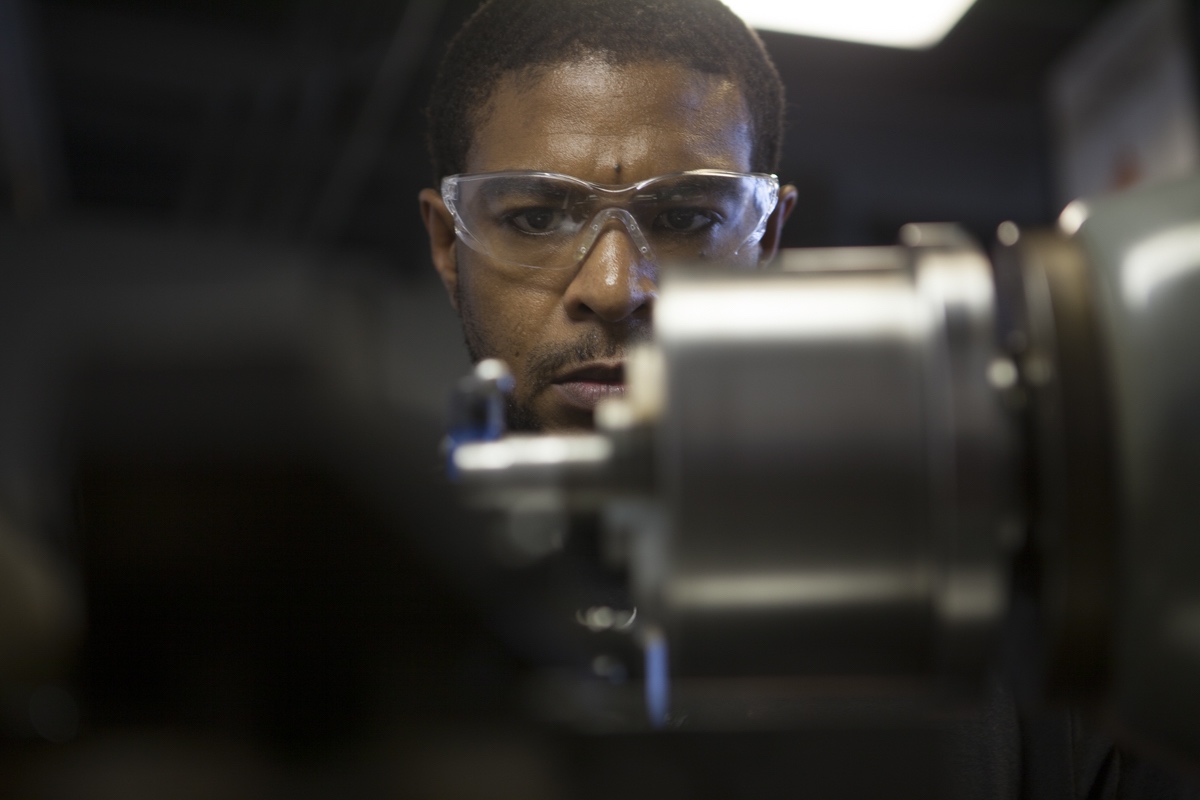
COMING HOME
When Tuan Jones jumps in his white Chevy SUV to make the trip to Cheektowaga for his 11 p.m. to 7 a.m. shift at Ashton Potter – a job he found through a temp agency – his day is just beginning. After he’s done he returns home briefly to eat and clean up. Then it’s off to Buffalo State College, where he is participating in a yearlong advanced manufacturing training program, sponsored by JPMorgan Chase and the state Department of Labor, aimed at helping minorities, women and veterans – all demographic groups severely underrepresented in the field – overcome the barriers to an industry that is starving for talent.
Jones speaks with unbounded energy. His self-confidence seems limitless, and he does not shy away from selling himself at every opportunity.
He keeps a binder on his desk at the training center full of certificates and awards from his time in the service, neatly slipped into plastic dividers, able to name the reason for each at a glance as he pages through.
“When they see me in my Navy (uniform), and they see all my awards, ‘This guy’s a badass, we need to get him. We need him,’” Jones said of past and potential bosses.
When he returned home, he thought that finding a job would not be as difficult as it was when he left. While for years the news coming out of Buffalo had been depressing, most of what he had been reading in recent years was about growth, about investment, about people coming back, about opportunity.
And so it was surprising to him that the jobs weren’t there.
Unlike his father, Garfield, who found steady work as a heating and cooling specialist when he returned to Buffalo, Jones’ Navy experience has not helped him find a gig.
“Trying to find something, at least on the background of what I’m qualified to do, was extremely hard,” Jones said.
He kept hearing that he was overqualified, a concept that he found confusing and frustrating. He pared down his resume.
“I started taking stuff off (my resume) so I wouldn’t look so qualified.”
After a few months, Jones landed a gig with Aaron’s, a rent-to-own business, the kind of operation that only thrives in poorer neighborhoods. He was part of the collection team, calling or knocking on the doors of customers twice a day to ask if they could pay, in full or in part, the money they owed on their couch or television or washing machine. He knew the answer even before he picked up the phone or rapped on the door.
He despised his work.
“It was always challenging, it was always frustrating, it was always a headache,” Jones said.
After about 18 months at Aaron’s, Jones was fired because he refused to come in on a scheduled day off.
That, he said, was one of the best things to happen to him since coming home.
His advanced manufacturing training is limited to people who have been out of work for at least 20 weeks.
“If it wasn’t for him firing me from Aaron’s I wouldn’t be here for this,” Jones said of his former boss. “I’ll take a slam in the face sometimes when another door opens.”
Now, he hopes, the training program will allow him to find decent, steady employment so he doesn’t have to leave his hometown again.
“It’s just the simple fact of trying to put my foot in the door, and that’s what I’m doing right now,” Jones said. “I’m putting my foot in doors and I’m not taking no for an answer.”
Part II of Beyond the Billion will be released next week.

